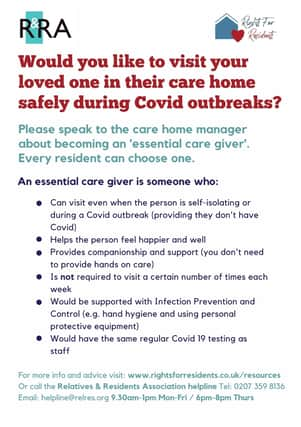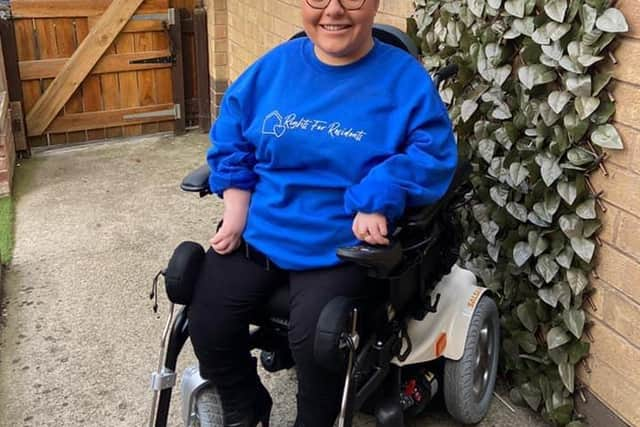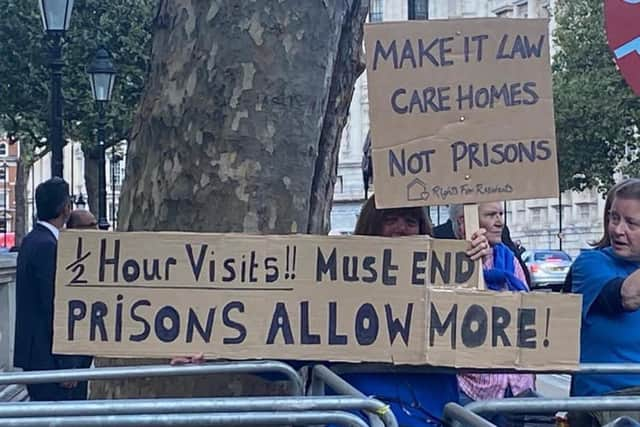Care home visiting article


Many people requiring 24-hour support are older adults however, over a quarter of care home residents are of working age. 22 months ago every care home in the country prohibited anyone other than employees entering and exiting the building, to help control the spread of Covid infections. Since then, there have been 28 changes to government advice on care home visits, making it difficult for people living in care homes, their loved ones, and people working in care homes to keep up with rapidly changing advice. As a result of this, people living in care homes have suffered exceptional periods of isolation in comparison to wider society. In many cases, as the systematic review by Suárez-González (2021) et al suggests, this has contributed to physical and neurological conditions rapidly deteriorating and individuals de-conditioning at an alarming rate. The Office for National Statistics reported that at the beginning of March 2021, there were just over 34,000 covid related deaths amongst people living with Dementia, a statistic that calls into question the efficacy of the isolation rules some of the most vulnerable in our society have endured. As an independent advocate for people living with dementia and a dementia training manager, my inboxes are regularly inundated with people’s harrowing stories and accounts of this enforced separation. Whilst wider society has begun to find ways of living alongside Covid for the foreseeable future without sacrificing any large portion of our usual lives, it seems people living in care homes have been left out of this national endeavour.
Current visiting guidance states that every person living in a care home can choose three people to visit the premises regularly, alongside an additional person who can be named as an “Essential Caregiver”. These people need to adhere to safety procedures such as proving they don’t have covid via a lateral flow test, notifying a care home of their planned visit and wearing a face covering.
Advertisement
Hide AdAdvertisement
Hide AdWhilst this seems like a straightforward piece of guidance, the discrepancies and inconsistencies many people who contact me on a regular basis are currently facing would suggest otherwise. Additionally, with the current levels of Omicron infections in our community, many care homes are finding themselves having to stop visits for 28 days or more because of staff infection rates.


With support from “Rights For Residents” and “John’s Campaign” I started the “Sheffield Care Home Residents, Family & Friends Support Group” (SCHSG) in September 2020 to help people in Sheffield currently finding themselves in this position with nowhere else to turn.
In September 2021 I accompanied both campaign groups to Downing Street where we delivered a petition signed by over 270,000 people which urged the government to enshrine care home visiting rights in law, to prevent further periods of agonising and disproportionate separation rules.
One thing which continues to strike me is the lack of understanding about what is meant by the term “Essential Caregiver”. Many providers and indeed loved ones of people living in care homes falsely interpret the title as suggesting that anyone who wishes to be a persons essential care giver needs to carry out manual care tasks such as supporting somebody to dress, wash, eat, walk etc.
This is incorrect.


Advertisement
Hide AdAdvertisement
Hide AdThe role of an Essential Caregiver is to have the right to visit a loved on who lives in a care home in ALL circumstances, even when a care home is in a state of “lockdown” because of positive cases being identified amongst people who work or live there.
The only exception to this is if you yourself test positive or the person you are visiting tests positive.
Every person living in a care home can have one person who can always visit them. The guidance also states that in certain circumstances, an individual living in a care home may need more than one person to take on this role.
The below poster created by Rights For Residents sums up the Essential Caregiver role succinctly and can be useful for providers to use when discussing visiting arrangements with loved ones and vice versa.
Advertisement
Hide AdAdvertisement
Hide AdAdditionally, with 25% of hospital occupancy being patients living with dementia, visiting restrictions have had catastrophic effects on this patient group over the course of the pandemic as highlighted by “John’s Campaign”. Currently Sheffield Teaching Hospitals are not permitting visits on wards however, patients who have neurological conditions such as dementia or a learning disability are permitted to have a designated person to visit them.
This should be at the discretion of ward managers and arranged on an individual case by case basis. The Yorkshire Ambulance Service also permit patients with neurological conditions and communication difficulties to have a loved one accompany them in an ambulance.
Whilst these are seemingly all positive steps in the right direction, the lack of consistency in approaches to visiting across our city and beyond is concerning. This is why it is of paramount importance that we raise awareness of current best practice to showcase what can safely be done to enhance the lives and wellbeing of people who live in residential care settings. If you need support, advice, advocacy or simply a space to share emotions and experiences you can find “Sheffield Care Home Residents, Family & Friends Support Group” (SCHSG) on Facebook or you can contact me directly via email: [email protected] or telephone: 07758483920.
The coronavirus pandemic is not going away, so neither should our dedication to uphold Article 5 of The Human Rights Act on behalf of our societies most vulnerable.